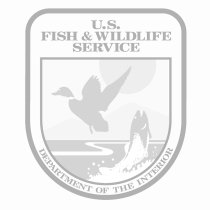Location
States
ArizonaEcosystem
River/streamIntroduction
The San Pedro Riparian National Conservation Area (SPRNCA), located in Cochise County, Arizona, was designated by Congress in 1988 to protect and enhance this desert riparian riparian
Definition of riparian habitat or riparian areas.
Learn more about riparian ecosystem, one of the last undammed rivers in the Southwest. The 40-mile stretch of the upper San Pedro River is managed by the Bureau of Land Management. The Babocamari River is a tributary that drains the Huachuca Mountains, and is mostly within the privately owned Babocamari Ranch. The USGS is investigating the potential for altering this watershed to improve recharge to the SPRNCA.
Federal agencies, including the US Forest Service, US Fish and Wildlife Service, US Parks Service, and Bureau of Land Management, are major land managers in this region, and they are collectively concerned with developing best practices for sustaining water supplies and vegetation. Private ranch owners have also identified an immediate need to adopt proper conservation strategies in this area to prevent further watershed degradation and maintain local water resources and vegetation that support their livelihoods.
Infrequent precipitation in the Southwest provides much needed water for ecosystems and human livelihood. When rainfall does not quickly leave watersheds as surface runoff, it has the opportunity to infiltrate, providing soil moisture that supports vegetation and wildlife. Water can also infiltrate deeply, where it enters groundwater and provides aquifer recharge. This recharge provides support for groundwater-dependent ecosystems such as the San Pedro River. When surface runoff is rapid, less rainfall infiltrates. High-intensity flows concentrate in ephemeral washes, incising channels and transporting heavy sediment loads downstream. As channels become further incised, less water is retained on the landscape. One potential solution that can slow runoff and rebuild channels is to install rock detention structures, including one-rock dams in channels or on hillslopes, and check dams (usually ~3 foot high loose rock structures set into channels) or rock gabions (rocks wrapped in a wire cage) in channels.
Key Issues Addressed
During approximately 1865-1915, much of the Southwest was overgrazed by domestic livestock, causing rapid vegetation loss and soil compaction and leading to soil erosion on hillslopes. This land degradation, combined with infrequent but intense rainfall events, causes rapid runoff from hillslopes which contributes to the formation of incised ephemeral channels, or arroyos. Arroyos transport stormwater quickly, leading to further incision and reduced infiltration of water into the aquifer. This process lowers water tables and leads to depleted surface and subsurface water availability for ecosystems, ranchers, and municipalities. Simple rock structures can be used to slow in-channel water flow and improve water retention on hillslopes and channels. Rock structures can increase infiltration and recharge, and improve downstream riparian ecosystem conditions. However, few quantitative studies assess the effectiveness of this strategy with respect to infiltration.
Project Goals
- Use remote sensing and geospatial hydrologic modelling to delineate sites where erosion control structures might be most effective in increasing groundwater recharge
- Quantify the effectiveness of erosion control structures in enhancing infiltration, using a combination of data-logging instruments and wildlife cameras
- Use high-resolution field data from restoration sites to verify model utility and monitor impacts
Project Highlights
Geospatial Models Inform Restoration Location: The study area was divided into zones of suitability for recharge according to watershed model results and remote-sensing analysis, which were compared to a groundwater model over the area. Gabions were installed at selected locations to slow the flow of water and promote infiltration. Concurrently, geophysical and geochemical baseline properties of sites were analyzed to assess the potential for infiltrated water to reach the aquifer .
High-resolution Data Collection: Surface and subsurface data-logging temperature sensors were installed upstream and downstream of one gabion. Because water transmits temperature changes more quickly than dry soil, researchers can infer vertical water movement through the subsurface using daily surface and subsurface temperature fluctuations. Novel to this study, repeat camera imagery was used to estimate ponded area through time. This allowed researchers to relate temperature-sensor-derived infiltration data to total flow observed by cameras.
Modeling Infiltration Volumes: Results from these studies were used in concert with existing stream discharge to calibrate a watershed model and extrapolate the results of the field study to the larger aquifer and to the year 2050. Researchers ran 225 model scenarios comparing possible infiltration volumes before and after gabion construction. For a 5-hour flow event, it was estimated that a single gabion could increase the total infiltrated volume between it and the next gabion by an average of 10%, but there was a high degree of variability. The local benefit of a single gabion was modeled to range from no effect to increasing infiltration over 200%.
Lessons Learned
Applying Results: The results of this study could be used as part of a proactive groundwater management plan to promote sustainable utilization of scarce water resources
- Installing erosion control structures at the Babacomari Ranch can increase infiltration rates and potentially increase recharge.
- The hydrologic model allows for visualization and planning of long-term impacts on water budgets and the multiple shared benefits of investing in restoration, especially when those zones exist in close proximity to major population centers.
- There was limited ponding above the gabion during flow events; instead, water flowed over and through the gabion in a shorter duration than expected with resulting downstream scouring. More observations are needed to assess whether gabions are effective restoring channel incision.
- The use of wildlife cameras had unexpected benefits and drawbacks. Using both camera and temperatures sensor data allowed researchers to interpret unusual temperature records due to snow or fog, as well as observe disturbance to sediment deposition by cattle. Poor nighttime image quality limited researchers’ ability to observe flow events that last into the night. This issue could be resolved by using camera models with white flash or installing reflective graduated markers along the gabion and channel to visualize water levels.
- Based on efforts to date, the researchers recommend installing cameras for a season prior to instrumenting a site to observe conditions and flow patterns and tailor the instrumentation accordingly.
Next Steps
- Use data collected in 2016 to extract impacts of structures on vegetation, soil-moisture/recharge, sedimentation, and site prioritization for future structures.
- Partners are working together to incorporate lessons learned at the Babacomari Ranch into other aridland water harvesting projects.
- Monitor impacts of structures on vegetation
- Partners are working together to cycle lessons learned at the Babacomari Ranch into other aridland water harvesting projects, both in regards to studies and practices
Funding Partners
- National Science Foundation
- Walton Family Foundation
- UA Hydrology and Water Resources Department
Resources
- Norman, Laura (2018a), USGS Aridlands Water Harvesting Study webpage.
- Norman, Laura (2018b), USGS Babocomari Managed Aquifer Recharge webpage.
- Fandel, C. A. (2016). The Effect of Gabion Construction on Infiltration in Ephemeral Streams (Master of Science). The University of Arizona, Tucson, Ariz.
- Fandel, C., Callegary, J. B., Ferré, T. P. A., Norman, L. M., & Scott, C. A. (2015, November). Evaluating the effect of gabions on vertical water flux in an ephemeral stream using wildlife cameras and temperature sensors. Presented at the 2015 Annual Conference of Society for Ecological Restoration - Southwest Chapter, Tucson, Ariz. Retrieved from http://chapter.ser.org/southwest/2015-annual-conferenc/
- Fandel, C., Callegary, J. B., Ferré, T. P. A., Norman, L. M., & Scott, C. A. (2016, March). Infiltration in ephemeral streams: Quantifying the effect of gabions on vertical water flux using wildlife cameras & temperature sensors. Presented at the Water Resources Research Center Annual Conference, “#AZwaterfuture: Tech, Talk, and Tradeoffs,” University of Arizona, Tucson, AZ.
- Callegary, J. B., Norman, L. M., Eastoe, C. J., Wilson, N. R., Fandel, C., Gray, F., & Wiele, S. M. (2017, September). Monitoring and modeling of hydrology, geology, and sediment and organic matter transport to support ecological restoration in semiarid ecosystems. Presented at the 7th World Conference on Ecological Restoration (SER2017), Foz do Iguaçu, Brazil. Retrieved from http://www.ser2017.org/
- The Arroyo Problem in the Southwestern United States by Brandon J. Vogt, USGS
- Norman, Laura M. (2013). Surface Water Rainfall-Runoff Modeling at the Babacomari Watershed, SE Arizona, with applications in GIS and RS. Report submitted to Walton Family Foundation.
- Norman, L. M., Lacher, L., Seibert, D., Pulliam, H. R., Hare, T., Austin, V., Villarreal, M.L., Gray, F., and Callegary, J. B. (2014, June).Delineation and Screening of recharge sites for installation of rock detention structures in the Babocomari River, a tributary of the San Pedro River. Presented at the Science on the Sonoita Plain, Appleton-Whittell Research Ranch. Elgin, AZ.
- Norman, L. M., Callegary, J. B., Lacher, L. J., Wilson, N. R., Fandel, C. A., Forbes, B., & Swetnam, T. (2018 In Review). Impacts of Restoration on Groundwater Recharge at the Babocomari Ranch, SE Arizona, Submitted to The Journal of Hydrology.
- Lacher Hydrological Consulting
Contacts
- Laura Norman, USGS, lnorman@usgs.gov
CART Lead Author
Ashlee Simpson, CART Graduate Research Assistant, University of Arizona
Suggested Citation
Simpson, A. C. (2018). “Assessing the Hydrologic Effects of Erosion Control Structures on the Babacomari Ranch.” CART. Retrieved from https://www.fws.gov/project/hydrologic-restoration-effects-erosion-control-structures.





